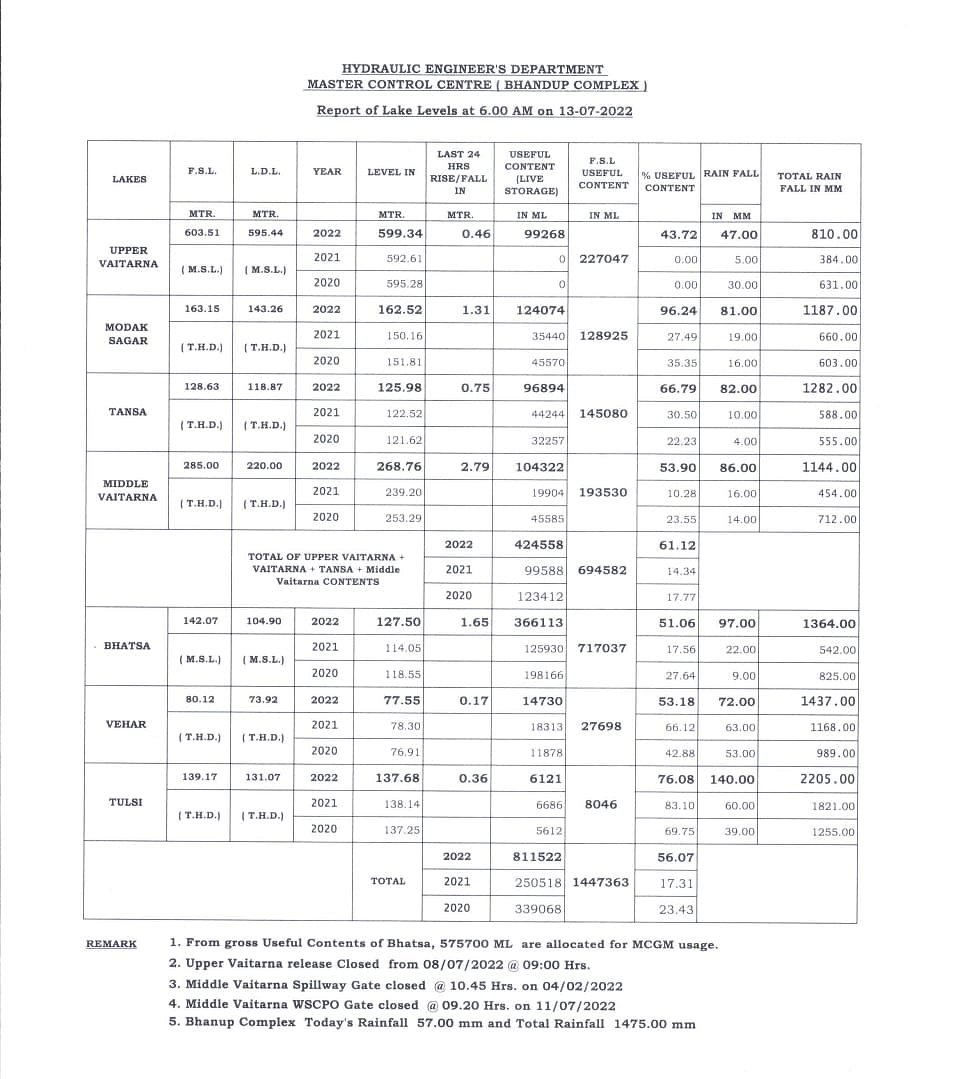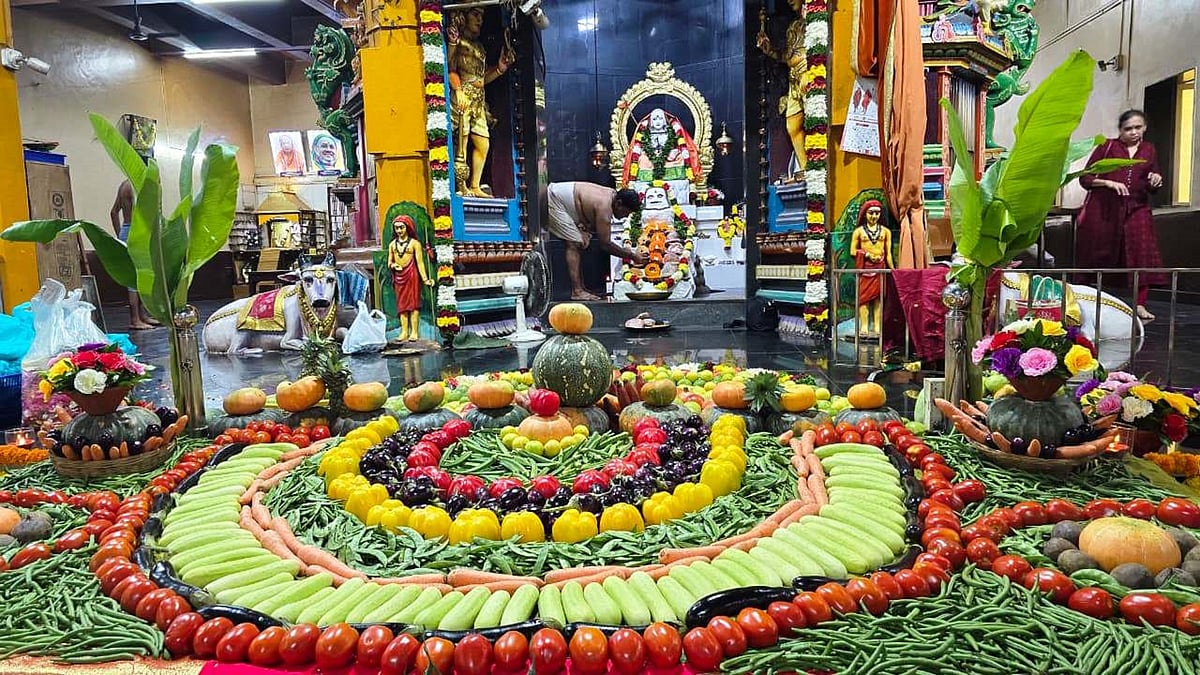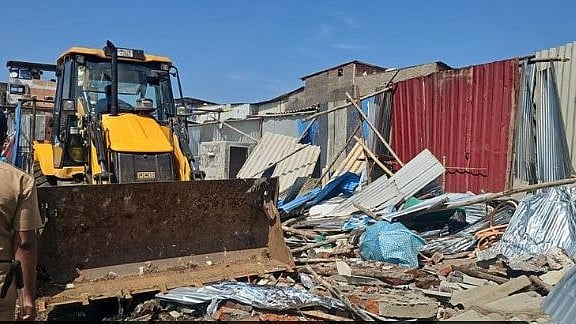Modak Sagar, one of the seven lakes that supply water to the city, started overflowing on Wednesday afternoon at 1.04 pm. It is the first lake to overflow this monsoon season. The heavy rainfall over the past few days has resulted in the lakes now having a combined water stock of 56 per cent, which can last for around 210 days.
Modak Sagar is located outside Mumbai and supplies 450 million litres to the city per day. This lake has a useful content of 1,28,925 million litres. Last year it started overflowing at 3.24 am on July 22, and on August 18 in 2020. As for the percentage of water supplied by the seven lakes, the maximum comes from Bhatsa (48 per cent), Upper Vaitarna (16 per cent), Middle Vaitarna (12 per cent), Modak Sagar (11 per cent), and Tansa (10 per cent). The Tulsi and Vihar lakes, located in the city, supply 1-2 per cent of drinking water.
The seven lakes that supply water to the city currently have 8,11,522 million litres (56 per cent) of the 14.47 million litres of their total capacity. In the last 24 hours, water stock in the lakes has increased by 83,236 million litres. This has added another 21 days of water stock, so at the present levels, supply can last up to seven months. In June, the lakes had just 10 per cent of water, which has now increased to 56 per cent over the last 13 days.

Incessant showers lashed Mumbai and its neighbouring areas on Wednesday morning, leading to flooding in many low-lying areas and traffic snarls on roads, officials said.
The local trains, considered as the lifeline of the metropolis, were largely unaffected on the Central Railway and Western Railway routes. The suburban services on the Harbour Line were running slow, according to railway officials.
Some areas, including the Andheri subway, which connects the east and west parts of the suburb, were flooded and police had restricted its use by citizens.
The Western Express Highway, connecting suburbs to south Mumbai, also witnessed heavy traffic, a Mumbai traffic police official said.
"There was heavy traffic on the route in Borivali, Goregaon, Jogeshwari, Andheri and up to some extent near Bandra," the official said.
The Colaba (in south Mumbai) and Santacruz (western suburb) observatories reported 24 mm and 44.6 mm of rainfall, respectively, in the 24-hour period till 8.30 am on Wednesday.
As per the India Meteorological Department (IMD), 20 locations in Mumbai received nearly 40 mm showers in six hours till 9.30 am on Wednesday.
"It is not a very high rainfall, but if it continues for some hours there could be water-logging on streets, further affecting the vehicular movement," an IMD official.
The MeT department has predicted a wet spell for the state capital on Wednesday and Thursday.
The cumulative rainfall in Mumbai has already surpassed its average precipitation in the present monsoon season, as per the IMD data.
There was water-logging up to 1.5 to two feet at the Andheri subway, following which traffic was divert to the S V Road, a police official said.
Flooding was also reported at the Kamani junction in Kurla and traffic there was normal.
In the Deonar eastern suburb, there was water-logging up to 0.5 feet at Neelam Junction. There was similar inundation on the Mankhurd railway bridge and traffic was moving slow, the official said.
Water accumulated up to one feet at the Bandra-Worli Sea Link gate, due to which traffic movement was slow in Worli, he said.
A tree collapsed in Bandra-Kurla Complex area, following which traffic was diverted from there to the J B Junction.
Traffic was slow at Paresh Park Market in Vikhroli, a bus depot near Santacruz railway station, Dadar TT, Wadala Shakkar Panchayat, near the Fatima High School in Ghatkopar, Sonapur Junction and Khar railway junction due to water accumulation, the police said.
A bus got halted at the Pedder Road, slowing down traffic on the route, they added.







